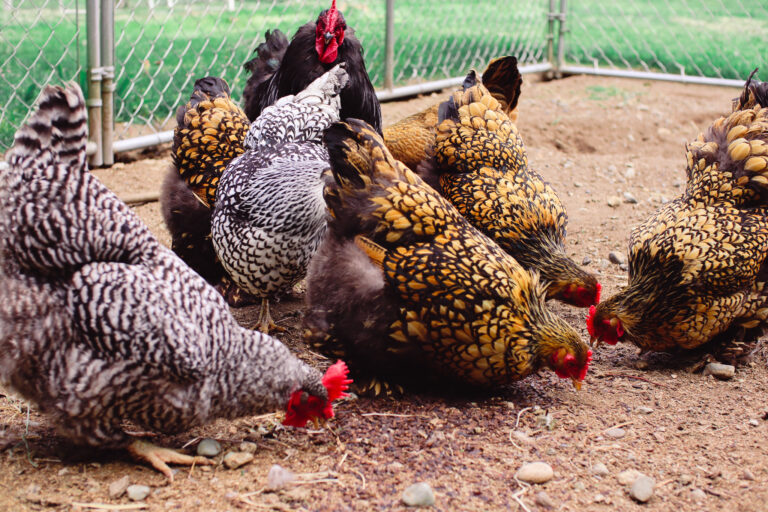

Chicken coop plans are found all over the internet. It can be really confusing getting started on your own chicken coop with so many different options available. The things you need to consider before beginning are how much space you have, mobility, predator pressure, and of course your budget.
I am not a huge fan of many of the “pretty” coops, while they are visually appealing, the most important thing is functionality. If you can get a pretty coop to be functional then that is wonderful, but do not sacrifice functionality for beauty. One example I have seen is putting fabric curtains, this can be a hazard to your birds as they will collect dust, toenails can get caught in them, and wings can get caught as well. Just be cautious of what you put inside the chicken coop.
Chicken coop plans are overwhelming. There is so much information out there. First, follow this short guide to determine what type of coop you should be looking for.
Chickens will gladly use all of the space you give them. So first you need to decide how much space and freedom you are willing to give. Some people prefer completely free-ranging their chickens. We have one flock of laying hens that free-range in our yard when we let them out. They get locked in at night and most of the morning due to a lot of hawk and eagle risk. If predators are a risk keeping them in a secure area is probably the best choice. The general recommendation is 10 square feet per bird in an outside permanent fenced run.
Choosing if you want to have your birds mobile and fertilize different areas of your yard, pasture, or garden is the next option. Premier1 Net fences are a great option for keeping birds in concentrated areas. Read my review on net fences here. The other option is keeping them in a permanent run. The more space you give them, the happier they will be and the less stress from mud they will get. It also means less cleaning for you. Portable fences require no cleanup as does free-ranging, outside the main coop anyways.
Also, you have to consider how often you will be near the chickens. The chickens in our yard are let out at the hour when our kids run around outside, and no overhead predator is going to come near all that commotion. Sometimes foxes or coyotes are the predator risk and they will come around all times of the day no matter what’s happening. It really just depends on where you live. Small predators like rats, snakes, weasels also should be considered. Rats are the reason we use 1/2″ hardware cloth on all of our coops, nothing else included chicken wire will keep them out.
Of course, your budget is your own choice, you can spend anywhere from $0-$5,000 on a chicken coop. This just depends on how much you want to put into it. Our first chicken coop was free, it took three men, a large truck, and a large car deck trailer to pull it out of someone’s yard. Those three men still won’t go pick anything up for me again, haha. To say it was a difficult task is putting it mildly, but it is still in use today and works great. We have also built many other things from scrap wood and different materials we have been able to recycle.
The Justin Rhodes’ Chickshaw is a great build for anyone looking to regularly move their birds around the pasture. Rhodes really took the time to evaluate every need a chicken has and make an amazing portable unit. The design has roosts inside the mobile unit for sleeping at night, nest boxes for laying. The nest boxes also have a bar for blocking off when you don’t want them in there, such as in the evening. Large wheels make it easy to pull over rough or uneven terrain. It also has an area for a mineral feeder so they can have free choice minerals out of the elements, reducing waste. The ramp for the chickens to go in is also the door to let them out in the morning. These plans truly solve most homesteaders’ problems while trying to raise chickens on a pasture.
The one reason we have not built this coop yet is the cost. The wheels are a special order item due to their size and weight capacity, which makes them pretty expensive (approximately $50 each right now). The other large expense is the siding. They use white corrugated PVC roof panels for the side and top which are most likely cooler for the birds and lighter than the typical galvanized steel. You also will need to use a net fence such as Premier1 Net Fencing, check out my review on those here.
These plans are so comprehensive though! If you know very little about building these plans will take you through step by step, even breaking down what you should do to prepare for the build by day. Justin even includes a budget listed! So If you are looking for easy-to-follow, all-inclusive plans for your pasture-raised birds these are it! Hopefully, my own Chickshaw build will be soon to follow.
Watch the video describing the Chickshaw 2.0 here and find the FREE plans here.
There is also a Chickshaw Mini Me for smaller flocks, smaller yards, and smaller people.
The John Suscovich tractor is also a great tractor for pasture-raising mobile birds. I love that the top is taller allowing easy access to the flock. On butcher day trying to get into the flip-top tractors and catching birds is less than ideal. It also gives the birds tons of light and airflow. The top and sides are covered in chicken wire or hardware mesh (what we prefer) to keep predators out. An overhead tarp is used as protection from the elements.
This tractor does not contain the plans for nest boxes, roosts, or mineral feeders. You can easily add those things if needed. The cost to build is fairly reasonable with the most expensive part being the steel piping that is the overhead framework. You may be able to source that from recycled chain link fences though.
The biggest reason we have chosen not to go with this build is the overall size and weight. We want to be able to move our birds quickly and efficiently. Also, it is necessary for everyone in the family to be able to move the birds when needed. When picking a chicken tractor we had to consider our land too, it is not always flat and we have large holes in the pastures so a big tractor that cannot easily be moved around the holes, is too cumbersome. Someday we may be raising enough birds that a tractor this size will be the only option, but for now, we prefer a smaller one.
John Suscovich Tractor Plans: $10
The inspiration for Justin Rhodes’ Chickshaw was from Polyface Farm’s Eggmobile. The Eggmobile is for serious egg producers! Depending on its size it can house up to 400 laying hens in a mobile pastured operation. It contains all the nest boxes and roosts each chicken needs and has bars to lock up the nest boxes in the evening. The trailer also has a self-contained feeding and watering system. The intention is you can put it out on a large amount of acreage and not have to haul in water or feed daily. This is the ultimate package for a homesteader trying to earn a wage off of an egg operation.
The plans for the Polyface Eggmobile can only be found in the Polyface Designs book. The book is an investment in itself. It has many designs from around the Polyface Farm. They are all designs for a larger farming operation though, not necessarily a small homestead. The Eggmobile is built on a trailer frame, framed with wood, and sided with steel. The bottom is slats covered in wire to prevent predators but still allows chicken manure to fall through. This means your pasture gets fertilized and you don’t have to clean up poop!
Polyface Designs book purchase directly from Polyface Farms: $90
Backyard Chickens is a wonderful forum that has been online since 2000! The manager Rob Ludlow has contributed to many backyard chicken owners. It is truly amazing how something as simple as starting a forum can contribute to a whole wealth of information to start a whole movement. We are here doing what we do today because of this movement. The forum “Coop & Run – Design, Construction, & Maintenance” has over 1200 pages of chicken coop ideas. Everything from the coop with a crystal chandelier to the free pallet construction coop.
If you have an understanding of how to build and want to be more creative with your coop I highly recommend scrolling through these forums. It is amazing the things people come up with the sky is the limit! Just remember to fulfill the basic needs of your chickens.
Backyard Chickens: Coop & Run – Design, Construction, & Maintenance
The best chicken coop plans will fulfill all the basic needs of your chickens. Laying hens have pretty basic needs a place to sleep, lay eggs, eat, drink, and hide. Roosting is the natural sleeping environment for chickens. A 1-2″ bar, rod, or stick is best, they need to be able to get off the ground to stay dry, warm, and protect their respiratory system. Nest boxes are more for you than the chickens. Chickens will find a place to lay, but you want to have a dry clean nest box for them to lay in. If the nest boxes are clean then you don’t have to spend so much time cleaning eggs. Eating and drinking are self-explanatory, but coming up with auto systems that do not require daily cleaning and filling will only benefit you and your time. The biggest issue new chicken owners have is predators. Always prepare for the worst, animals are smart and will try to breach your coop for that free meal if they can. The size of wire, strength of materials, and latches you choose will all depend on what kind of predators you are dealing with, but all should be considered.
Finally, finding the best chicken coop plans will be a very personal decision. It depends on mobility, predators, your land, and your preferences. Each piece of land is unique and each chicken owner’s lifestyle is unique. We have had to make alterations to all of our coops after we started using them. In the end, chickens will be happy if they have food, water, a place to sleep, and a place to lay.




No spam, notifications only about current blog updates.